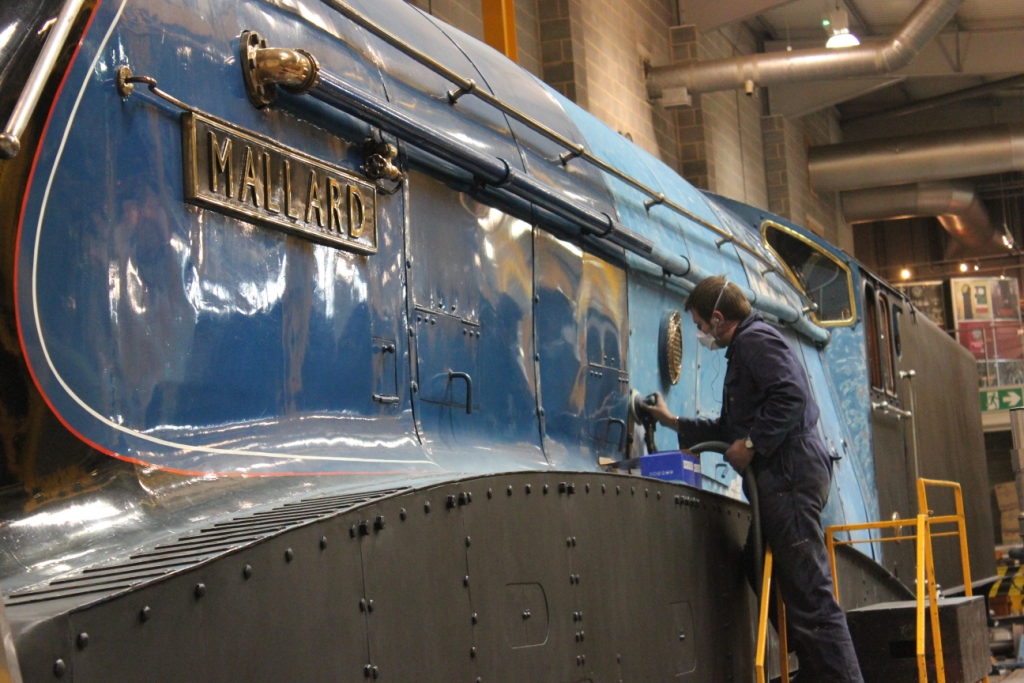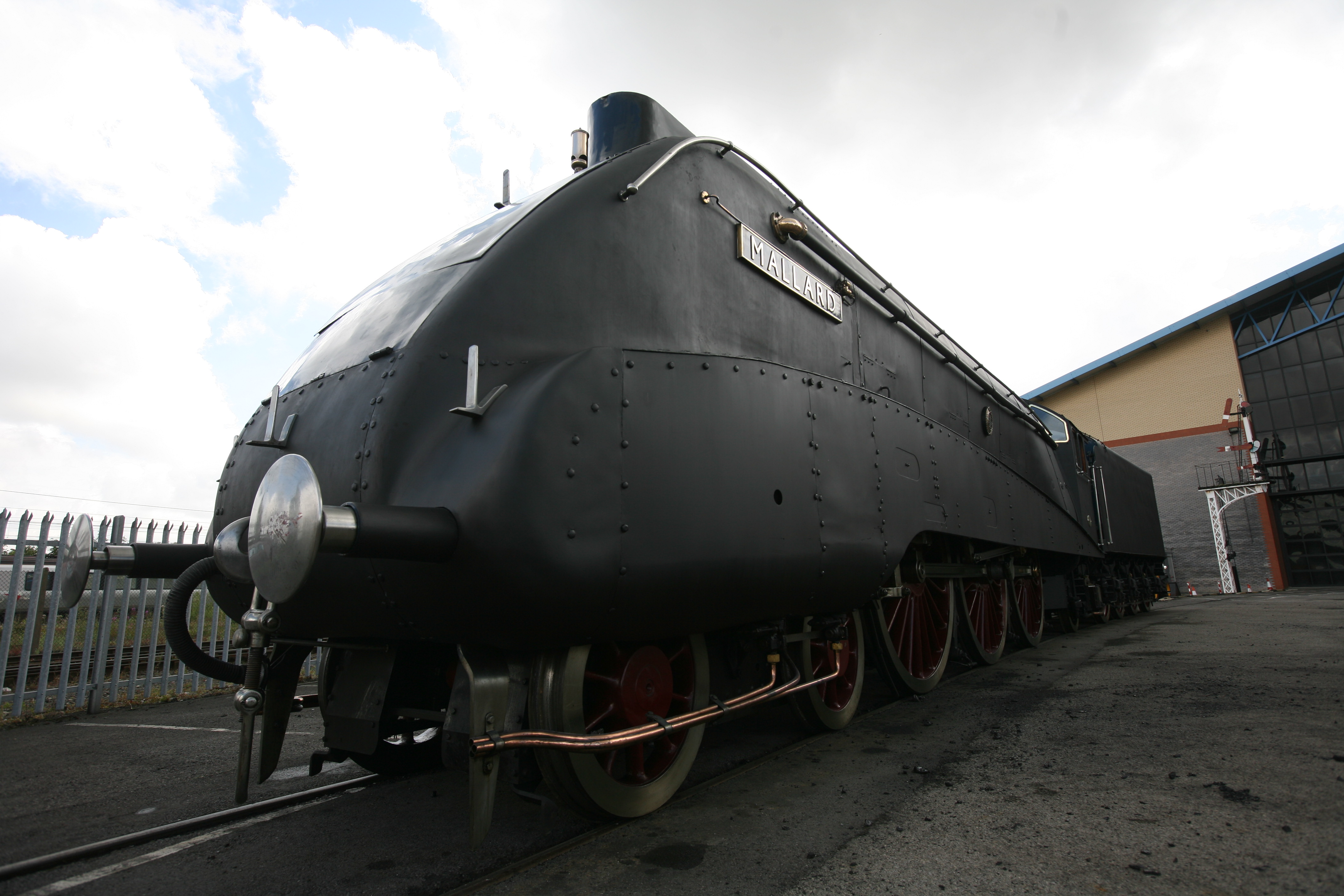In this guest post, Ian Hewitt from Heritage Painting, the great team who cosmetically restored Mallard and Dwight D. Eisenhower, explains the painstaking process.
In spring last year we were asked by the museum to quote for the repainting of two LNER A4 Pacifics in readiness for the Mallard 75 events in July 2013. In this blog we tell the story of how our team went about the momentous task of cosmetically restoring the world’s fastest steam locomotive.
In mid-July 2012 No.4468 Mallard was shunted out of its usual home, the Great Hall of the National Railway Museum and in to the museum workshops allowing the Heritage Painting team to begin work. After 26 years on display, her paintwork was beginning to show a degree of tiredness.
The team set about the arduous task of stripping the old paint. We chose to use air powered sanders with a dust extraction facility to ensure that the work could be carried out in the view of the public, giving visitors the unique experience of watching a locomotive go through a cosmetic overhaul.
A few days in and the team discovered that the tender was beginning to show signs of corrosion. One of the main concerns was the interior void between the coal space and water space which was found to be rotten. Large sections of the degraded paint had to be removed to allow the required areas to be rebuilt with fibre glass and body filler.

Following the preparation, the first coat of primer was applied. On this project every coat of paint was painstakingly applied by hand providing a degree of accuracy unmatched by modern techniques. We initially used a black primer, rather than colour, as it allows us to see any further areas which require more filling. This also allowed us the rare opportunity to display the engine to the public in its matt black war time livery for three days, before the blue undercoat was applied.

Each individual coat of paint applied requires the previous coat to be sanded back, cleaned with a degreaser and then wiped again with a tack cloth. This helps remove surface dust from the coachwork. After three coats of blue undercoat, the engine and tender were prepared for the first application of LNER Garter Blue gloss. Once again, each coat was sanded smooth, cleaned and prepared for the next coat. Mallard received 4 coats of Garter blue to allow us to reach a level of depth and shine you will see today.
We then began applying the various elements of sign writing to the engine. Even though the loco is predominantly blue there is tender lettering, cabside numerals, nose end numerals and various other elements which have to be completed prior to varnishing. The characters are made up of 23.5crt Gold Leaf, applied by hand, and then shaded in red, black and white to lead to the finished result.
Meanwhile the wheels were cleaned and prepared. Due to the valances, each wheel becomes a difficult place to get to, let alone paint! These were undercoated twice in red followed by two coats of Coronation Red gloss.
Finally, after checking that we were happy with the results, the paint receives a gentle polish and clean before two coats of varnish were applied.
|
What does it take to paint an A4?
|
You can keep up to date with all our latest projects by following us on Facebook.
You can see their amazing work at our Autumn Gathering, visit www.nrm.org.uk/mallard75 for more info.
I heard rumour that Mallard had appeared briefly in wartime black. I am a decorator and therefore intrigued as to how the top coats were applied.
I remember seeing this chap hand paint cellulose in the same way that London Taransport buses were finished.
What method did you use? if you don’t mind me asking.
There’s a train class Called LNER Class Norwegian A5 Pacific
But there all scrapped is it possible to rebuild them?
And put them on display??
There’s 62 locos in the A5 Class